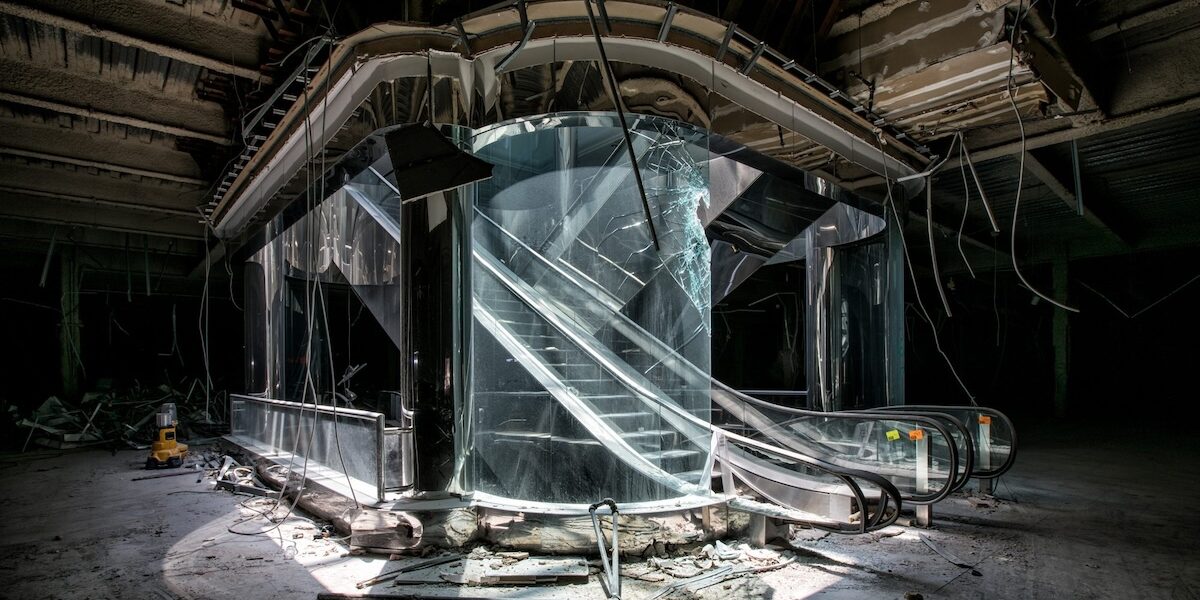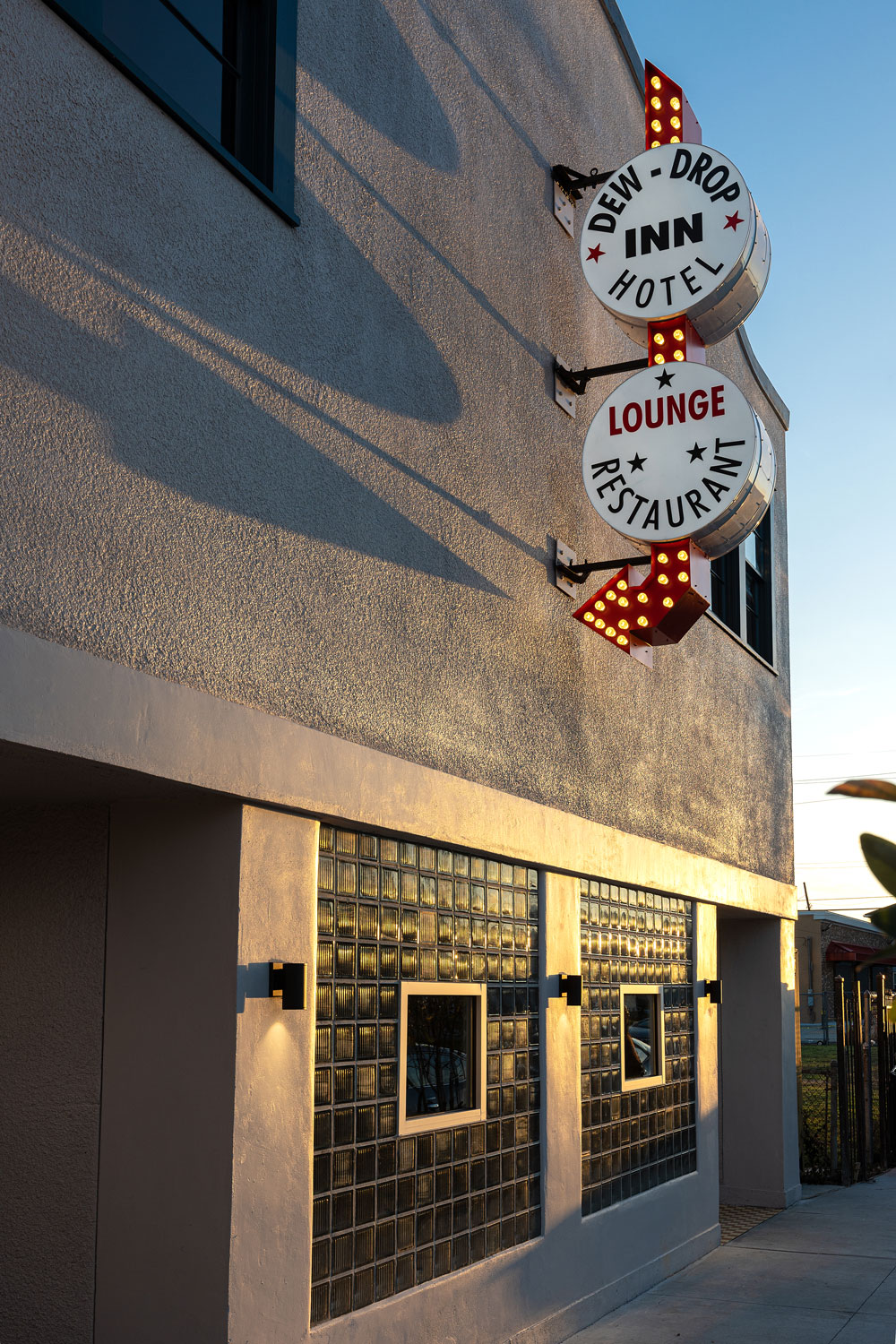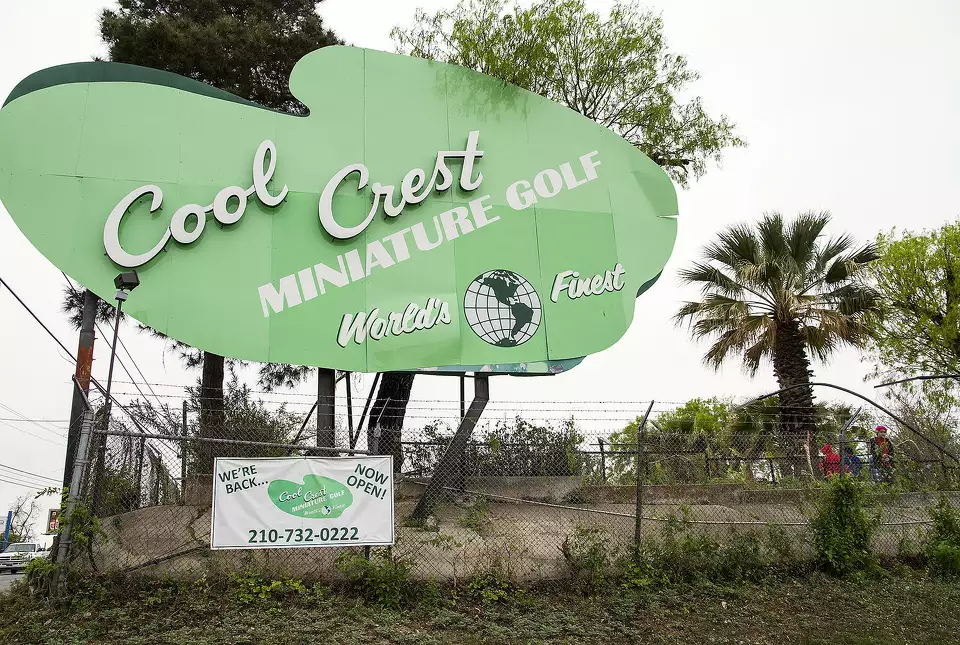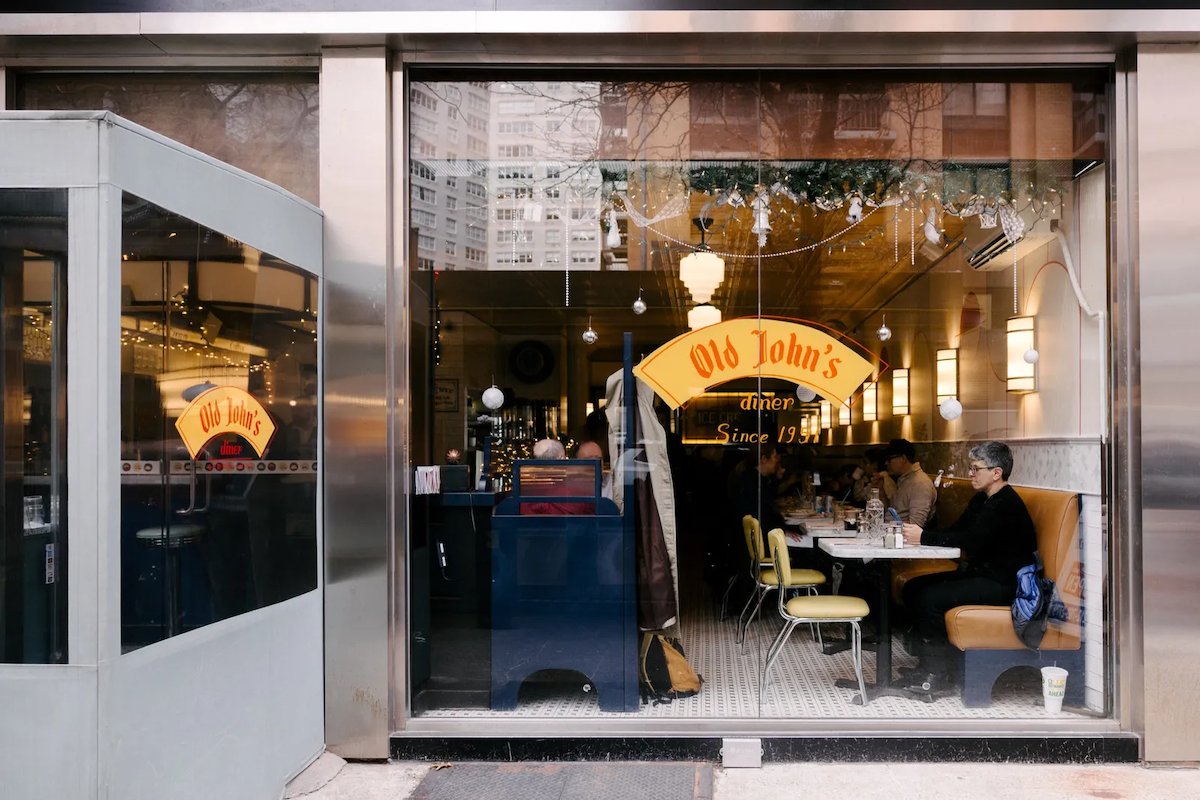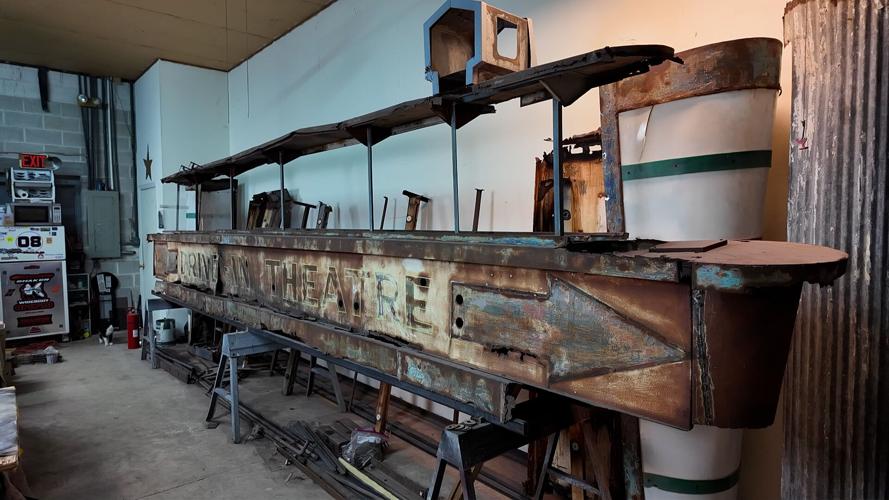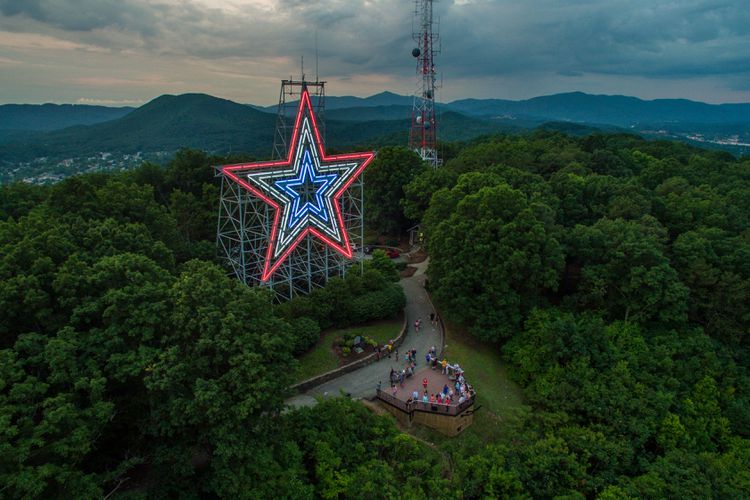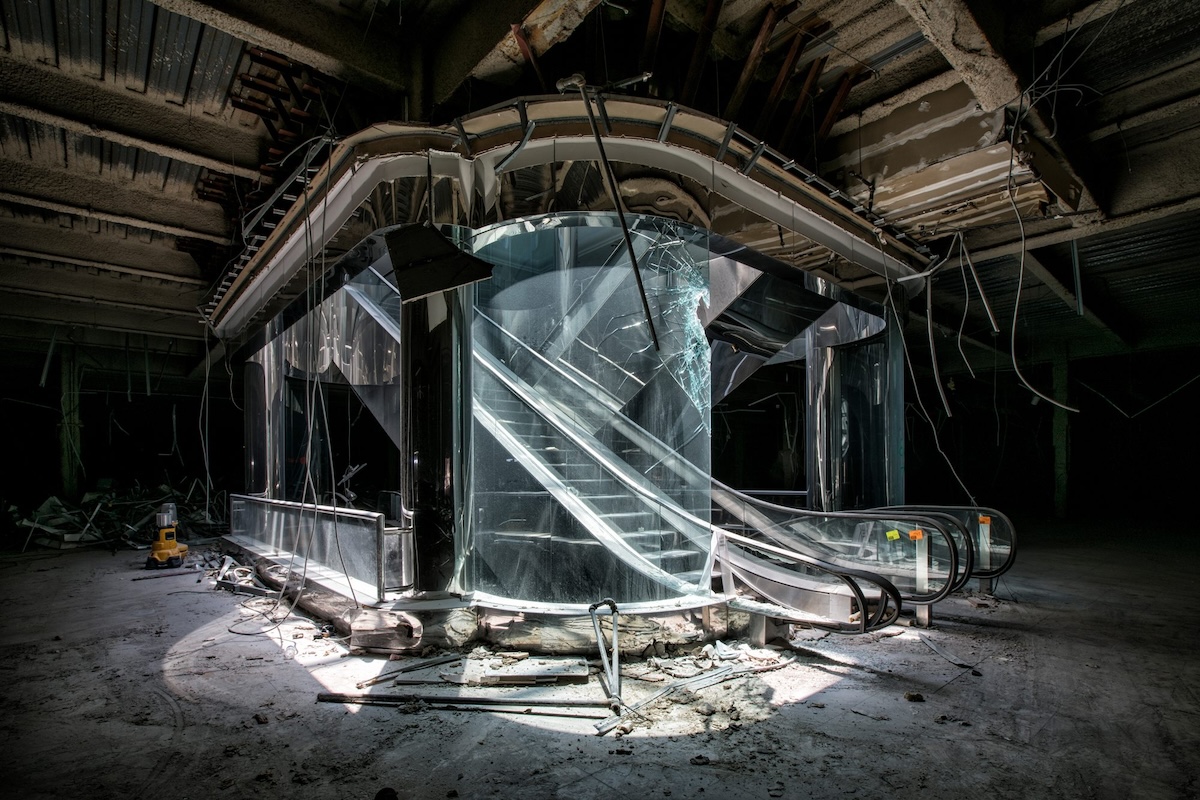The historic Dew Drop Inn comes back to life after a stunning renovation
After an extensive rehabilitation project, the restored façade and signage at the historic Dew Drop Inn once again light up LaSalle Street in Central City. Photo by Charles E. Leche
From the Preservation Research Center of New Orleans: In recent years, a vintage sign hanging on the front of the Dew Drop Inn was one of the few reminders of the legendary hotel and music venue’s mid-century heyday. Its halls once echoed with the sounds of musical greats from Etta James to James Brown, but the club had fallen silent, and its facade on LaSalle Street sat covered in layers of fading plywood, peeling siding and deteriorating Permastone.
Local developer Curtis Doucette Jr. purchased the vacant site in 2021 — after previous developers’ revitalization attempts had fallen through — with hopes of reviving the Dew Drop as a music venue and hotel. He was immediately drawn to its storied history and the role it played in the evolution of music.
“This is the first time I really fell in love with a building,” Doucette said, “and there was a lot of learning for me.”
San Antonio’s historic Cool Crest to take down sign. Here’s why.
Cool Crest Miniature Golf has been a San Antonio fixture for more than 80 years. The restored sign, as seen in April 2014 at the site’s hilltop location on Fredericksburg Road, heralds a new era for Cool Crest patrons old and new that’s all about preserving its past for another generation. Express-News file photo
From mysanantonio.com: If you’re driving down Fredericksburg, you might notice the iconic Cool Crest Miniature Golf sign missing. Don’t worry, no crime occurred. The historic San Antonio attraction will be taking down its sign and storing it temporarily, according to a Facebook post from Cool Crest on Monday, January 22.
Cool Crest stated that the sign is coming down in the next couple of weeks to accommodate some construction occurring on Fredericksburg Road. The site said a “beautiful facade and sidewalk” in front of Cool Crest is planned. The business hopes construction runs smoothly and the sign will be back up before it reopens on March 8.
The Best Diners Are Still Just Diners
The space has been updated without losing its nostalgic appeal. Photographs by Adam Whyte for The New Yorker
From The New Yorker: I always read the whole menu at a diner, but I don’t really need to. My order is both predictable and unremarkable: a cup of soup, a cheeseburger with fries. Sometimes I’ll switch things up and have a Greek salad, with extra feta cheese, or corned-beef hash and scrambled eggs, though the side of fries always remains. A cup of coffee—lots of milk—and a slice of pie. If I were to scroll back through my life, tallying every diner meal, every fat ceramic mug of watery coffee, I think they might number in the thousands. My most recent diner cheeseburger was at Old John’s, on the Upper West Side, which for seventy-odd years has served as a spark of life in the strangely antiseptic micro-neighborhood around Lincoln Center. The restaurant closed, seemingly for good, in 2020, another of the city’s thousands of pandemic-era small-business casualties, only to be taken over and revived by a former employee, Louis Skibar. Now a successful restaurateur who co-owns the Toloache Restaurant Group, he started at Old John’s as a delivery boy in 1984.
Iconic Shore Drive-In Theater Sign is Being Restored to its Former Glory
From WBOC: SELBYVILLE, Del. — The memorable sign from the Shore Drive-in Theater now sits in the Selbyville workshop of a local artist. After opening in 1954, the theater closed down in ’76, leaving the sign to wither away along Route 50 in West Ocean City.
Picture this: It’s 1954 and you and your sweetheart are heading out to the Shore Drive-In to watch Hitchcocks Rear Window. When you get home, you turn on the news and John B. Greenburger is giving you the top stories on WBOC TV.
You would be able to do both of those things because 70 years ago, the Shore Drive-In opened and WBOC TV came on the air.
What’s The Story Behind That Big Star In Roanoke, Virginia?
PHOTO: COURTESY STAR CITY SKYCAMS – VISIT VBR
From Southern Living: Originally erected to celebrate Christmas and encourage holiday shopping, the Roanoke Star was commissioned by the Roanoke Merchants Association (today’s version of the Chamber of Commerce) and built by local, family-owned company Kinsey Sign Co, led by Roy C. Kinsey and his three sons, Roy Jr., Bob, and Warren.
The steel star, which is actually three stars—a small center star with two sets of outlining frames—was lit for the first time on November 23, 1949 in an event that was attended by around 100 people, including John Payne, a Roanoke native and star of Miracle on 34th Street.
Measuring 88.5 feet high and weighing 10,000 pounds, the star, which cost $28,000 to build, was to be dismantled at the end of that first holiday season. Nearly a century later, it remains.
The Life and Death of the American Mall
A nearly gutted department store escalator in Owings Mills Mall in Owings Mills, Maryland. MATTHEW CHRISTOPHER, ABANDONED AMERICA
From Atlas Obscura: I’ve visited hundreds of abandoned places in my life—factories to asylums, schools to churches—but suburban malls might be the most surreal and striking. They captivate the imagination in a way few other types of environments can: with an almost imperceptible layer of fog that forms between the first and second floors of an atrium, endless reflections of vacant storefronts, or a chance encounter with a groundhog in the remains of a food court. Stripped of signage and wares, they are nearly perfectly liminal spaces. Malls have become a part of the modern collective unconscious, through both the haze of half-buried memories of any American over the age of 20 and their ubiquity in popular media. They reflect the American consumer’s identity, and to see a suburban mall in ruins warps nostalgia into something nightmarish and forlorn in a way that abandoned factories, hospitals, or even churches don’t quite do.


